Indexed In
- The Global Impact Factor (GIF)
- CiteFactor
- Electronic Journals Library
- RefSeek
- Hamdard University
- EBSCO A-Z
- Virtual Library of Biology (vifabio)
- International committee of medical journals editors (ICMJE)
- Google Scholar
Useful Links
Share This Page
Journal Flyer

Open Access Journals
- Agri and Aquaculture
- Biochemistry
- Bioinformatics & Systems Biology
- Business & Management
- Chemistry
- Clinical Sciences
- Engineering
- Food & Nutrition
- General Science
- Genetics & Molecular Biology
- Immunology & Microbiology
- Medical Sciences
- Neuroscience & Psychology
- Nursing & Health Care
- Pharmaceutical Sciences
Research Article - (2024) Volume 23, Issue 3
Correlation among anxiety, personality dimensions and oral health impact profile on young adults.
Adrian Cosmin Ilie*Received: 20-Aug-2019, Manuscript No. OHDM-24-1426; Editor assigned: 23-Aug-2019, Pre QC No. OHDM-24-1426 (PQ); Reviewed: 06-Sep-2019, QC No. OHDM-24-1426; Revised: 02-Sep-2024, Manuscript No. OHDM-24-1426 (R); Published: 30-Sep-2024, DOI: 10.35248/2247-2452.24.23.1113
Abstract
Purpose: To investigate the relationship between anxiety (state and trait), social phobia and Oral- Health related Quality of Life (OHQoL) among young adults in Timisoara, Romania.
Material and methods: 67 students were asked to complete the Social Phobia Inventory (SPIN), the State-Trait Anxiety Inventory (STAI), NEO-FFI-shorten version of NEO Personality Inventory (NEOPI) and Oral Health Impact Profile (OHIP-49).
Results: The highest levels on anxiousness after the administration of STAI form Y-1 were observed in those having neuroticism (median=50) and on those with experience as character type (median=40) as a principal dimensions. Using form Y-2, anxiousness as a personality trait was observed as being least present in those who displayed conscientiousness character type (median=38), closely followed by individuals pertaining to the extraversion group, (median=40), while the highest ranking was obtained by those within the with neuroticism character type (median=54), followed by experience group character type (median=43).
The OHIP score is positively and statistically significantly correlated with the STAI form Y-1 (Spearman’s r=0.319; p=0.009) and STAI form Y-2 (Spearman’s r=0.371; p<0.001), signifying that the presence of high level of anxiety and anxious traits lead to low oral health-related quality of life. The correlations between OHIP score and SPIN were not statistically significant (Spearman’s r=0.151; p=0.223), appearing that social phobia is not influenced by a decreased perceived oral health. Social phobia scores as assessed by the SPIN questionnaire were also dependent on personality profile. Neuroticism as a character type scored highest (median=31), followed by the experience (median=20), while those encompassed in the extraversion and conscientiousness groups fell within one point of each other (median=15, median=16 respectively).
Conclusion: Anxiety (state and trait anxiety, social phobia) is dependent on personality profile and is associated with a worse OH-QoL.
Keywords
Quality of life, Oral health, Personality profile anxiety, Social phobia.
Introduction
For a long period of time, when the general health status of an individual was evaluated, the oral cavity was quite often taken out from this assessment. So until recently, the impact of oral health problems on the psycho-social dimension of the individual received little attention as long as it was not about important oral health conditions. Lately, attention has been drawn to the fact that underlying medical conditions less life threatening have an influence on the individual's psychosocial status and consecutive to the quality of life of the individual.
Starting from this point, the concept of Oral Health Related Quality of Life (OHRQoL) has been developed. Oral health related quality of life is a multidimensional concept that takes into account aspects such as "appropriate physical functioning, emotional functioning, social functioning; perceptions of excellent oral health; satisfaction with oral health and lack of socio-cultural disadvantage due to oral status " [1].
After defining this concept, there were also tools to measure this concept, such as the General Oral Health Assessment Index (GOHAI), the Dental Impacts in Daily Living (DIDL), or the Oral Health Impact Profile (OHIP).
In interpreting the results obtained from the application of these scales it is considered that it should be taken in consideration factors as the complexity of affective status of the patient at that time and also the personality traits.
Regarding affective status, it is well known that depression and anxiety are quite common in younger age groups. It has been reported that about one in five patients with previous dental treatment experience develop clinically significant symptoms of depression and about one half of them experience some anxiety related to their dental visits. The presence of different levels of anxiety often is followed by inadequate dental care resulting in an important deterioration of oral health.
The impact of anxiety on daily functioning was studied by Locker, who found that dental anxiety has impacted at the psychosocial level, involving psychological reactions, influencing social relationships and enhancing avoidance behavior. The presence of psychosocial problems caused by affected dentition may adversely affect people’s general wellbeing and Quality of Life (QoL).
As a direct consequence there is an increased interest within dentistry for the QoL, which focuses on health-related physical, social, cognitive and emotional functioning. Oral Health-related Quality of Life (OH-QoL) has been studied in different areas, including oral surgery, orthodontics and periodontology. One of its instruments-Oral Health Impact Profile (OHIP) is a selfevaluation scale in which responses involve a subjective, personal experience so it is to be expected that the evaluation obtained through the use of this scale will be influenced to a certain extent by the individual's personality traits.
The influence of the personality aspect on the functional and psycho-social well-being of oral conditions was investigated in many studies. Thus, according to Thomson et al, an individual's personality influences how he or she responds to the presence of symptoms or how they interpret them and thus influence the answers on oral health quality of life scales.
The aim of this study was to investigate the impact of different aspects of anxiety spectrum and character type on the Oral Health-related Quality of Life (OH-QoL) and how personality traits influences anxious status in a population of young adults [2].
Materials and Methods
Study design and patients
For the purposes of this study 74 participants (pts) were recruited from medical school. The sample size was a priori calculated to provide enough statistical power to reject a false null hypothesis. The inclusion criteria were the willingness to participate in the study. They were asked to complete a series of questionnaires assessing Oral Health-related Quality of Life (OH-QoL), the personality dimensions using NEO-FFI, social phobia using the Social Phobia Inventory (SPIN) and anxiety using the State-Trait Anxiety Inventory (STAI). Seven participants were drops out because they don’t fulfilled entirely and correctly the forms and questionnaires from 67 pts (90.54%), 28 male (41.8%) and 39 female (58.2%) were analysed (Table 1).
All participants signed an informed consent form to participate in the study. Oral Health-related Quality of Life (OH-QoL) was evaluated using the Romanian version of the Oral Health Impact Profile (OHIP-49), which consists of 49 key questions pertaining to people’s perceptions of the impact of oral conditions on their well-being. Each question was scored on a five-point Likert-type scale of very often (4), fairly often (3), occasional (2), hardly ever (1) and never (0). Seven dimensions can be distinguished: functional limitation, physical pain, psychological discomfort, physical disability, psychological disability, social disability and handicap [3].
The Romanian version NEO-FFI represent the shortened version of the revised NEO Personality Inventory (NEO-PI) developed by McCrae and Costa in 1989. The scale asses openness to experience, extraversion, agreeableness, conscientiousness and emotional stability (neuroticism), the big five personality dimensions. The questionnaire is self-reported and consists in 60 items, 12 items for every personality dimension. Every item was rated by the participants on a 5-point Likert-type scale from 1-“strong disagreement” to 5-“strong agreement”. Personality dimension scores are calculated by summing the item scores that correspond to the related subscale. The highest score on the subscale corresponding to one of the five dimensions indicates the dominant personality trait.
The Social Phobia Inventory (SPIN) is a 17-item self-rating scale that measures physiological, behavioural and cognitive symptoms associated with social phobia. Six of its items assess fear in social situations, seven items measure avoidance of performance of social situations and four items evaluate physiological discomfort in social situations. Each symptom present over the last week was rated and reported using a fivepoint Likert-type scale (0-4). The total scores indicates the degree of social anxiety (less than 20 confirming the absence, between 21-30 mild form, from 31 to 40 moderate anxiety, more than 41 but less than 50 severe anxiety and over 51 very severe anxiety).
The State-Trait Anxiety Inventory (STAI) comprises separate self-report scales for measuring state and trait anxiety. The SAnxiety scale (STAI form Y-1) consists of twenty statements that evaluate how respondents feel “right now, at this moment.” The T-Anxiety scale (STAI form Y-2) consists of twenty statements that assess how people generally feel. Responses for the S-Anxiety scale assess intensity of current feelings “at this moment”: 1) not at all, 2) somewhat, 3) moderately so and 4) very much so. Responses for the TAnxiety scale assess frequency of feelings “in general”: 1) almost never, 2) sometimes, 3) often and 4) almost always.
Each STAI item is given a weighted score of 1 to 4. A rating of 4 indicates the presence of a high level of anxiety for ten SAnxiety items and eleven T-Anxiety items (e.g., “I feel frightened,” “I feel upset”). A high rating indicates the absence of anxiety for the remaining ten S-Anxiety items and nine TAnxiety items (e.g., “I feel secure,” “I feel relaxed”). The scoring weights for the anxiety-present items are the same as the blackened numbers on the test form. The scoring weights for the anxiety-absent items are reversed, i.e., responses marked 1, 2, 3 or 4 are scored 4, 3, 2 or 1, respectively. The anxiety-absent items for which the scoring weights are reversed on the S-Anxiety and T-Anxiety scales are for SAnxiety the following: 1, 2, 5, 8, 10, 11, 15, 16, 19, 20 and for TAnxiety: 21, 23, 26, 27, 30, 33, 34, 36, 39.
To obtain scores for the S-Anxiety and T-Anxiety scales, the weighted scores for the twenty items that make up each scale were added taking into account the fact that the scores are reversed for the above items. Anxiety scales can vary from a minimum of 20 to a maximum of 80 [4].
Statistical analysis
For the collection and analysis of the data on which this study is based, SPSS v.17 (SPSS Inc, Chicago, Il, USA) was used. Results representing numerical values with Gaussian distribution are presented as average values ± standard deviation, for variables with non-parametrical distribution presentation is that of median, (interquartile range), minimum and maximum, whereas for categorical variables are present as number of individuals and percentage out of total. Assessing of the relation between form Y-1, Y-2, OHIP scores and personality profiles (the big five model personality dimensions) was achieved by dividing the cohort in main types of personality: Neuroticism, conscientiousness, openness to experience and extroversion. Henceforth, the variability of the scores obtained from form Y-1, SPIN and form Y-2 between character type groups was analysed.
The difference between averages values were compared using the unpaired t-student test (for two groups) or the ANOVA test (for more than two groups). The Mann-Whitney U test (for two medians) and the Kruskall-Wallis test (for more than two medians) were used in order to assess the significance of the recorded variances. The calculation of Spearman’s rho value was used to assess the strength of association between two numerical variables.
A value close to 0 indicated a weaker correlation, while a value closer to -1 or 1 characterized a stronger correlation between variables. In order to evaluate the significance of the differences between distribution of the observed variables and that of a hypothetical Gaussian one, the Kolmogorov-Smirnoff test was applied. A p-value lower than 0.05 was indicative of a nonparametric distribution. The distribution of variables in two groups was assessed with the use of Levene’s test. Heteroscedastic variances between groups was assumed for a pvalue lower than 0.05 [5].
Sample size calculation was performed prior beginning of the study, aiming to provide a confidence level of 95% and a statistical power of at least 80%.
For the present study, the threshold of statistical significance was represented by a p-value lower than 0.05.
Results
Patients characteristics
Among the studied lot, the majority of patients, representing 64.2% (n=43) belonged to the conscient character type, the least encountered group was that of openness to experience with only 7.5% (n=5) included, followed by 11.9% (n=8) who presented a neurotic personality and a slightly more numerous group, of 16.4% (n=11) had an extraverted personality. The lot’s characteristics can be observed in detail in Table 1.
| Studied parameter | Result |
|---|---|
| Male gendera | 28 (41.8%) |
| Female gendera | 39 (58.2%) |
| Age (years)b | 24 |
| Personality typea | |
| Neuroticism | 8 (11.9%) |
| Extraversion | 11 (16.4%) |
| Openness to experience | 5 (7.5%) |
| Conscientiousness | 43 (64.2%) |
Note: aCategorical variables. Results are presented as frequencies and percentage from the total; bNumerical variables with non-parametric distribution. Results are presented as median and (interquartile range)
Table 1. Patient’s characteristics.
SPIN, form Y-1 and form Y-2 scores distribution
In the studied group, the SPIN scores had a bi-modal distribution with two zeniths corresponding to scores between 0-10 points, respectively 20-30 points; at the same time, the distribution was skewed to the right (skewness=0.496 ± 0.293), with the majority of the values recorded in the lower scorerange (0-8 points). The distribution of the SPIN values is presented in Figure 1 [6].
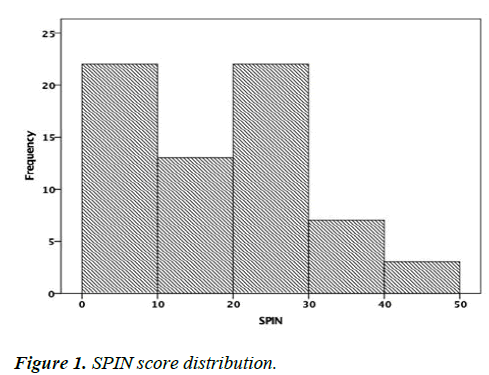
Figure 1: SPIN score distribution.
Both form Y-1 and Y-2 had a distribution of values skewed to the right (skewness of form Y-1=0.318 respectively skewness of form Y-2=0.365) (Figures 2 and 3).
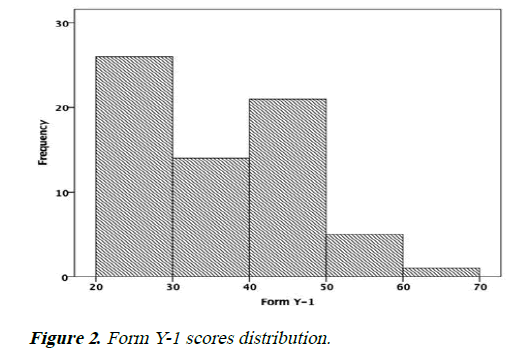
Figure 2: Form Y-1 scores distribution.
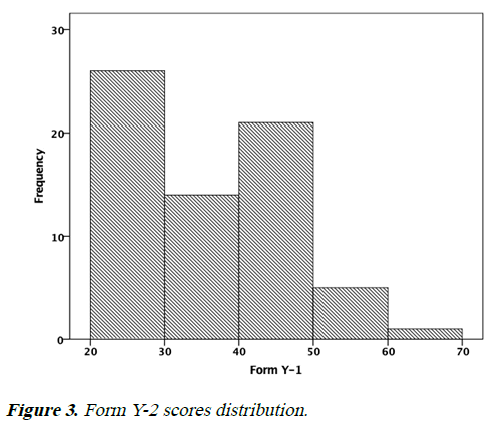
Figure 3: Form Y-2 scores distribution.
Interrelations between personality profile, form Y-1, form Y-2 and spin
The highest levels on anxiousness in a particular situation as resulted from the scores patients had after the administration of form Y-1 were observed in those having neuroticism as a principal dimension (median=50) (Table 2).
| C | Neuroticism | Extraversion | Experience | Conscientiousness | P |
|---|---|---|---|---|---|
| Form Y-1 | 50 (42-55) | 29 (28-36) | 40 (39-42) | 32 (28-44) | 0.02 |
| Form Y-2 | 54 (47-59) | 40 (27-44) | 43 (38-45) | 38 (30-47) | 0.01 |
| Spin | 31 (18-44) | 15 (5-20) | 20 (17-20) | 16 (7-23) | 0.04 |
Note: Variables with non-parametric distribution; results are presented as median and interquartile range. P-values were calculated using Kruskal-Wallis test
Table 2. Form Y-1, form Y-2 and SPIN scores according to personality dimensions.
Those with experience as principal dimension also scored high on the Y-1 form, a result equivalent to increased state anxiety (median=40). Lower scores were achieved by those pertaining to the conscientiousness (median=32), with the lowest scores of state anxiety being observed in the extraversion group (median=29).
Using form Y-2, anxiousness as a personality trait was observed as being least present in those who displayed conscientiousness (median=38), closely followed by individuals pertaining to the extraversion group, which scored a median of 40, the experience group had a even more evident anxious traits (median=43), while the highest ranking was obtained by those within the neuroticism (median=54). Social phobia scores as assessed by the SPIN questionnaire were also dependent on personality profile. Neurotic persons scored highest, depicting a high level of social phobia, with a median of 31. The experience group presented with second-highest scores (median=20), while those encompassed in the extraversion and conscientiousness groups fell within one point of each other (median=15, median=16 respectively) [7]. The scores of form Y-1, form Y-2 and SPIN in relation to personality dimensions are detailed and can be seen in Figures 4-6.
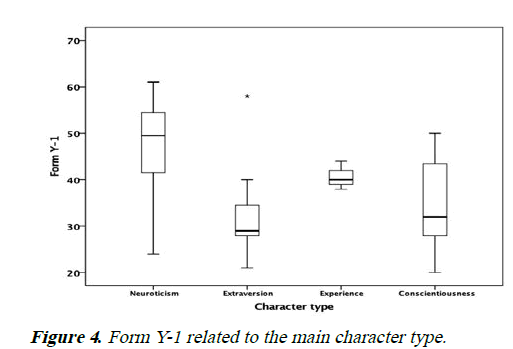
Figure 4: Form Y-1 related to the main character type.
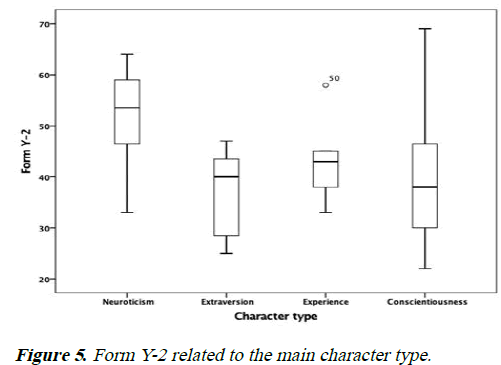
Figure 5: Form Y-2 related to the main character type.
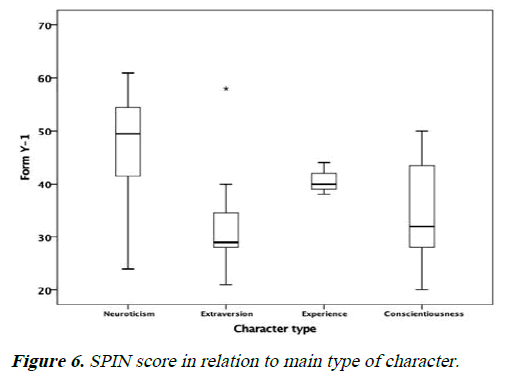
Figure 6: SPIN score in relation to main type of character.
Correlations between OHIP score, form Y-1, form Y-2 and SPIN
The OHIP score is positively and statistically significantly correlated with the form Y-1 (Spearman’s r=0.319; p=0.009) and form Y-2 (Spearman’s r=0.371; p<0.001), signifying that the presence of high level of anxiety and anxious traits lead to low oral health-related quality of life (Figures 7 and 8) [8].
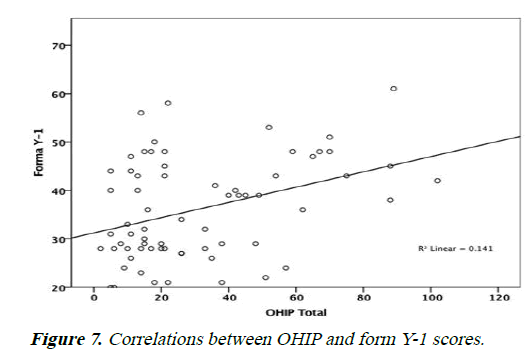
Figure 7: Correlations between OHIP and form Y-1 scores.
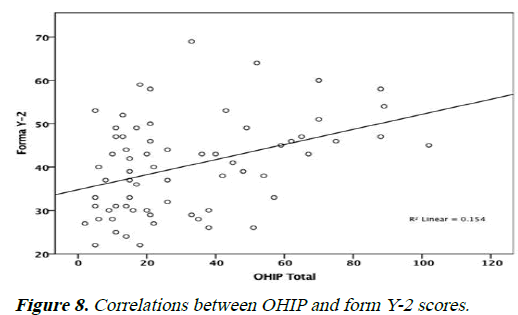
Figure 8: Correlations between OHIP and form Y-2 scores.
The correlations between OHIP score and SPIN were not statistically significant (Spearman’s r=0.151; p=0.223), appearing that oral health-related quality of life is not influenced by social phobia [9].
Discussion
One of the novelties of this study consists in the analysis of this young age group. Explained as a constant, nonspecific and often irrational worry in generally safe situations anxiety could be linked to significant impairment of everyday functionality. Studies have shown that depression and anxiety can lead to poor oral hygiene, influencing the oral health status of affected individuals.
The presence of periodontal pathology condition enhanced the percentage of anxiety and phobia when compared with control group patients. They consider themselves as suffering from dental anxiety (68.7% vs. 14.3%, P<0.001), experiencing fear due to receiving dental injections, the presence of dental instruments in the mouth or the sound of drill. Both in the following individual domains: Functional limitation (P=0.005); physical disability (P=0.003); psychological disability (P=0.010); social disability (P=0.011); and handicap (P=0.012) as well as in the global score of OHIP-14 has been associated with the chronic periodontitis [10].
Dental anxiety has also been identified as a significant factor in the appearance of caries. Severe dental anxiety has been correlated with more extracted teeth than in patients with no anxiety. Wennstrom A, et al., reported that individuals with high dental anxiety were more likely to have fewer teeth and poor perceived oral health. Viswanath D, et al., conducted a study on school children which demonstrated a direct relationship of dental anxiety with caries. Dentally anxious students had a high decayed, missing and filled tooth surface index.
Those who experienced dental anxiety presented poor oral health related quality of life, the scores being below of general population. The present study attempted to explore the impact of different types of anxiety (social phobia, state anxiety) or anxiety traits on OH-QoL among a young adult population [11].
The present study was evaluating young population without known existing oral pathology. The results of the present study highlight the importance of anxiety in relation to Quality of Life (QoL). Anxiety-trait and anxiety appeared to be significantly correlated with the impact of Oral Health on Quality of Life (OH-QoL). These findings are in accordance with other studies indicating that those experiencing high levels of dental anxiety are among those with the poorest oral health-related quality of life. In a cross-sectional study involving UK residents it was found that dental anxiety was negatively associated with OH-QoL (r=0.14, P<0.001). It seems that poor oral health condition has a negative influence on both OH-QoL and level of dental anxiety and the presence of dental anxiety could cause impaired OH-QoL.
There are many aspects that have to be taken in consideration when subjective perceptions of well-being are evaluated: Expectations; preferences; material, social and psychological resources and more important, socially and culturally derived values. In terms of satisfaction with appearance there is an important impact of oral health conditions on quality of life; this may determine feelings of shame in social contacts of those who are psychosocially disadvantaged. Therefore, the expected benefits of improving oral health condition treatment would include an improvement of self-esteem and a reduction in social anxiety [12].
Interestingly, in our study we did not find a significant correlation between the physiological, behavioral and cognitive symptoms associated with social phobia and oral health quality of life evaluated with OHIP. This could be explained by the fact that the SPIN scale sums up more components of social phobia such as fear, avoidance of performance and physiological discomfort in social situations.
It becomes obvious that the reduction of anxiety rather than improved oral health could contribute to enhanced quality of life and may have significant clinical implications.
The treatment of dentally anxious patients should be focused on reduction of dental anxiety and not only be aimed to make dental treatment possible, for example by applying a pure pharmacological approach.
As for the personality aspect, the anxiety faces analysed in our work differed significantly according to the main personality dimension. Thus, the most intense anxious manifestations, whether it was state anxiety (subjective subjection to tension, nervousness, distrust, uncertainty and anxiety), the trait (the constant tendency of the person to perceive the world and react or behave) or social phobia, were observed in those who had as main personality the neuroscience and openness to experience.
If people with the main neuroscience dimension are recognized as expressing especially negative effects such as fear, sadness, embarrassment, guilt or disgust, the openness to experience is recognized as a person with active imagination, preference for variety, intellectual curiosity and independent thinking. The presence of anxious spectrum phenomena more often in those with neuroticism was somehow expected by their typical emotional constitution. But their presence in those with openness to experience can be explained by the fact that they live more emotionally, both positive and negative emotions. Thus managing the reduction of anxiety for a better improvement of oral health involves an approach that also involves the individual's personal substring, which may predispose him to an anxious symptomatology.
Conclusion
The results suggest that there is a correlation between anxiety and personality profiles and between anxiety and the scores of OHQoL. Taking in consideration the evaluation and treatment of anxiety before the initiation of dental treatment it is important not only for the purpose to improve their oral health but also because it could contribute to an enhancement of their OH-QoL.
That is why is becomes very important the interdisciplinary approach of patients being at risk for developing anxious behaviour in order to avoid difficulties in the initiation of dental treatment.
Ethics Approval and Consent to Participate
The study design and contract forms were approved by the ethics committee of the “Pius Branzeu” emergency county hospital Timisoara. (No 159/21.05.2019).
Consent to Publish
All the subjects have been informed upon the research and informed consent was obtained before the beginning of the study. This research is respecting the declaration of Helsinki ethical principles for research regarding the safety of human subjects.
Availability of Data and Materials
The authors confirm that all data underlying the findings are fully available without restriction. Since the database with the analyzed data contains personal patient’s information, the data will be available for all interested researchers after submitting a request to the ethics committee of the “Pius Branzeu” Emergency County Hospital Timisoara.
Competing Interests
The authors have declare that no competing interests exist.
Funding
Not applicable.
Authors' Contributions
RO, IP, CZ conceived of the presented idea, RO, LD wrote the manuscript with support from IP, AI, AB and VE, BT performed the calculations. All authors discussed the results and contributed to the final manuscript.
Acknowledgements
Not applicable.
References
- Gift HC, Atchison KA. Oral health, health and health-related quality of life. Med Care. 1995;33(11):NS57-77.
[Crossref] [Google Scholar] [PubMed]
- Allen PF. Assessment of oral health related quality of life. Health Qual Life Outcomes. 2003;1:1-8.
[Crossref] [Google Scholar] [PubMed]
- Atchison KA, Dolan TA. Development of the geriatric oral health assessment index. J Dent Educ. 1990;54(11):680-687.
[Google Scholar] [PubMed]
- Leao A, Sheiham A. The development of a socio-dental measure of dental impacts on daily living. Community Dent Health. 1996;13(1):22-26.
[Google Scholar] [PubMed]
- Slade GD, Spencer AJ. Development and evaluation of the oral health impact profile. Community Dent Health. 1994;11(1):3-11.
[Google Scholar] [PubMed]
- D'Mello DA. Are your patients depressed? Implications for dental practice. J Mich Dent Assoc. 2003;85(5):26-32.
[Google Scholar] [PubMed]
- Kisely S, Sawyer E, Siskind D, Lalloo R. The oral health of people with anxiety and depressive disorders-a systematic review and meta-analysis. J Affect Disord. 2016;200:119-132.
[Crossref] [Google Scholar] [PubMed]
- Green CA, Pope CR. Depressive symptoms, health promotion and health risk behaviors. Am J Health Promot. 2000;15(1):29-34.
[Crossref] [Google Scholar] [PubMed]
- Moore R, Brodsgaard I, Rosenberg N. The contribution of embarrassment to phobic dental anxiety: A qualitative research study. BMC Psychiatry. 2004;4:1-1.
[Crossref] [Google Scholar] [PubMed]
- Locker D. Psychosocial consequences of dental fear and anxiety. Community Dent Oral Epidemiol. 2003;31(2):144-151.
[Crossref] [Google Scholar] [PubMed]
- Johannsen A, Asberg M, Soder PO, Soder B. Anxiety, gingival inflammation and periodontal disease in non‐smokers and smokers–an epidemiological study. J Clin Periodontol. 2005;32(5):488-491.
[Crossref] [Google Scholar] [PubMed]
- Shaw WC, Richmond S, Kenealy PM, Kingdon A, Worthington H. A 20-year cohort study of health gain from orthodontic treatment: Psychological outcome. Am J Orthod Dentofacial Orthop. 2007;132(2):146-157.
[Crossref] [Google Scholar] [PubMed]
Citation: Ilie AC. Correlation among anxiety, personality dimensions and oral health impact profile on young adults. Oral Health Dent Manage. 2024;23(3):1113.
Sources of funding : Not applicable.
